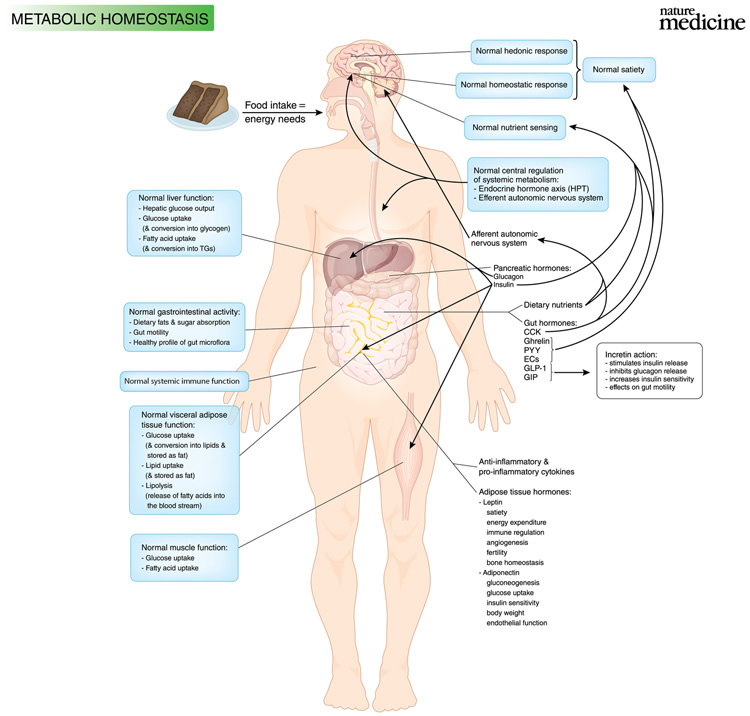 Every now and again Nature, the eponymous journal of science and discovery – or one of its many offshoots delivers a real treat to their readers in the form of images and slides. This month (August 2011) Nature Medicine is offering a series of diagrams looking at metabolic homeostasis and metabolic syndrome.[1]
Every now and again Nature, the eponymous journal of science and discovery – or one of its many offshoots delivers a real treat to their readers in the form of images and slides. This month (August 2011) Nature Medicine is offering a series of diagrams looking at metabolic homeostasis and metabolic syndrome.[1]
Thank you Nature – we appreciate your efforts – we really do!
Diabetes and obesity (Diabesity) are often referred to as the twin epidemics, owing to their high prevalence and mechanistic relatedness. A key concept that has emerged over the past few years is that different organs have different, but integrated, roles in the pathogenesis of the metabolic syndrome. This ePoster, a collection of figures prepared by leaders in the field, present a comprehensive view of the molecular pathophysiology of the metabolic syndrome at the systems and cellular levels.
The ePoster is presented in three levels. At the top level the poster offers an overview of metabolic homeostasis and of disease from a whole-body perspective. At the next level several metabolically important organs (brain, liver, muscle and adipose tissue) are highlighted, illustrating organ cross-talk and what happens to each of these organs on a tissue level. At the final level the cells in these organs (neurons, hepatocytes, myocytes, adipocytes and macrophages) are highlighted, illustrating the molecular mechanisms that maintain metabolic homeostasis and how this goes awry in metabolic disease.

Comment
The treatment of patients presenting with diabesity and metabolic syndrome often overlooks the role of nutrition as a distinct therapeutic agent, and many commentators that view all medicine as predominately dependent on pharmaceutical involvement discount the role of food supplements, functional foods and nutraceuticals. This comprehension is changing as the role of these agents are becoming better understood and are continuing to validate their use as championed by many Nutritional Therapists and others over the last 30 years.[2]
References
[1] Nature Medicine: Metabolic syndrome eposter Aug 2011 View Site
[2] Visioli F. Nutritional support in the pharmacological treatment of metabolic syndrome. Eur J Pharmacol. 2011 Jul 27. [Epub ahead of print] View Abstract







1 Comment. Leave new
thanks for sharing – amazing piece of work! I can chuck away all my text books now!